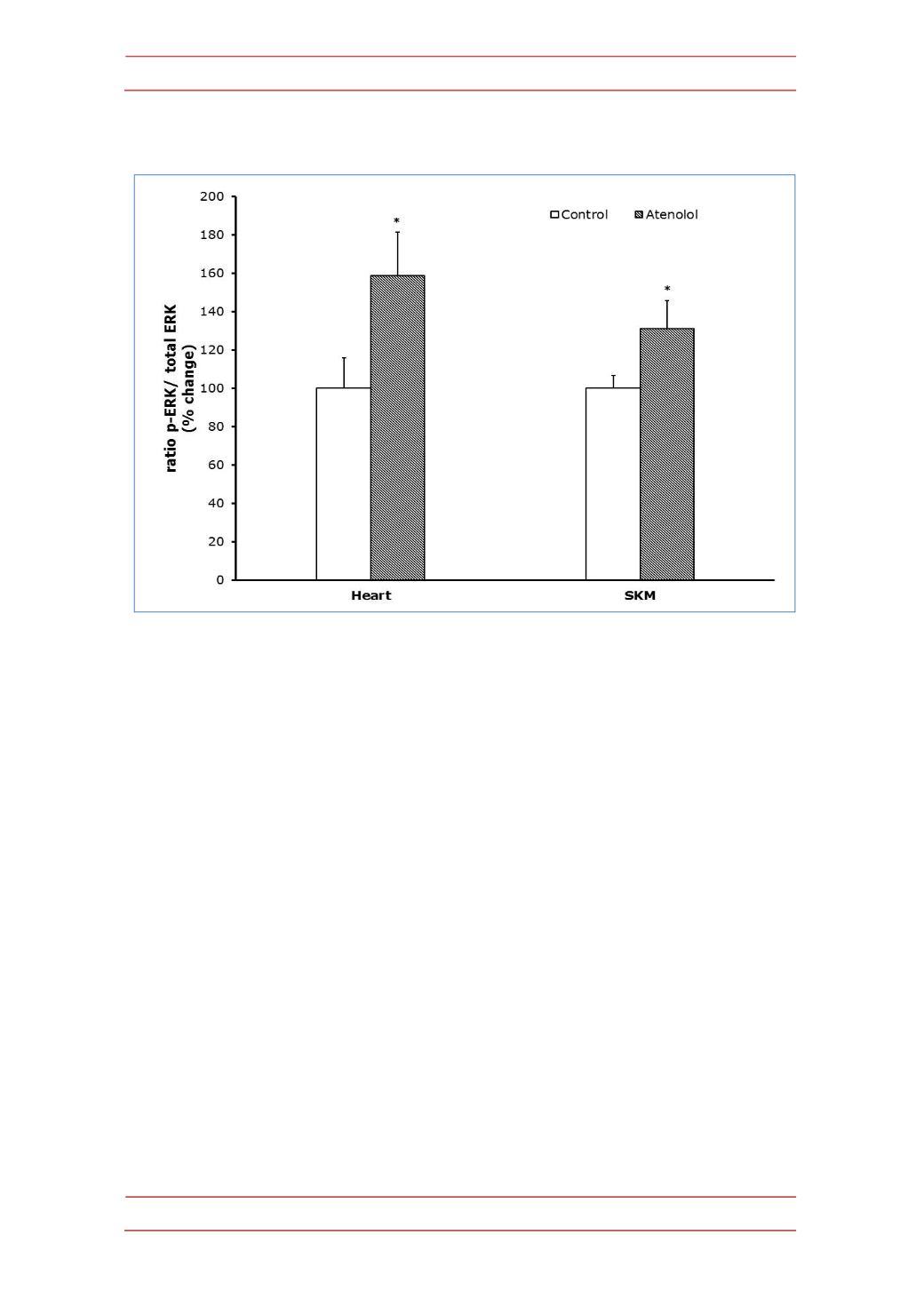
A. Gómez et col.
262
to total ERK (p-‐ERK/total ERK) showed significantly higher values in the atenolol
than in the control group (Figure 6).
Figure 4.-‐
Protein oxidation, glycoxidation and lipoxidation indicators in heart mitochondria from
control and atenolol treated mice. Values are means ± SEM from 6 different animals and are
expressed as percentage of those in the controls for each protein modification marker. Control
values: 3,817±128 (glutamic semialdehyde, GSA); 434±37 (AASA, aminoadipic semialdehyde,
AASA); 557±41 (carboxyethyl-‐lysine, CEL); 1038±77 (carboxymethyl-‐lysine, CML); 16295±364
(malondialdehyde-‐lysine, MDAL). Units: µmol/mol lysine. Asterisks represent significant
differences between the control and the atenolol group. ** P<0.01; *** P<0.001.
No significant differences in heart rate, or the systolic, mean and diastolic
arterial blood pressures were observed at 18 months of age (Figure 7A). In
contrast, the heart rate measured at 35 months of age was significantly and
strongly decreased in the atenolol group (Figure 7B), whereas the systolic, mean
and diastolic arterial pressures trends to decreased values did not reach statistical
significance (Figure 7B).
Finally, the Kaplan Meier´s survival curve (Figure 8) showed a similar mean
life span (50% survival) and a lower maximum (at 10% survival) longevity in the
atenolol group only at old age, the difference in survival starting only after 28
months of age.


